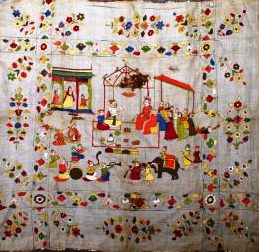
Craftspersons/ Artisanal, Education/Learning, Organisation, Institution, Movement, Sustainability, Sustainable Devt.
Kala Raksha and Kala Raksha Vidyalaya
Chatterjee, Ashoke
October, 2011
| Kala Raksha has emerged as an important force and influence in the effort to preserve and sustain India’s craft heritage, as well as for understanding its contemporary relevance. Mahatma Gandhi and those who struggled with him for independence recognized the central role of handcraft to India’s civilization, values and aspirations. In the complex transition from a colonial economy to industrialization and development that followed freedom in 1947, India became the first country to integrate craft into national planning. Although much has been achieved since then, the craft sector is in crisis. Globalization, the pressures of consumerism, changing lifestyles and conflicting notions of modernity have all combined to make this a critical moment for the sector. The need is to demonstrate the relevance of craft to sustainable livelihoods for millions of Indians, and as a means for empowering those who remain at the margins of society and of what many consider ‘progress’. Kala Raksha has demonstrated the relevance of craft as an important opportunity for sustainable rural livelihoods in one of India’s harshest environments, as well as the relevance of crafts to wider issues of empowering women and the marginalized. Kala Raksha and the Kala Raksha Vidyalaya have together helped to bridge the gap between the traditional knowledge held by rural communities and the demands a... |
This is a preview. To access all the essays on the Global InCH Journal a modest subscription cost is being levied to cover costs of hosting, editing, peer reviewing etc. To subscribe, Click Here.



